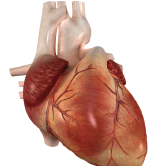Mineral metabolism disturbances are common among older people and may contribute to cardiac valvular calcification. The current study was conducted to evaluate mineral metabolism markers as potential risk factors for calcific aortic valve disease. Serum levels of phosphate, calcium, parathyroid hormone, and 25-hydroxyvitamin D were measured in 1938 Cardiovascular Health Study participants who were free of cardiovascular disease and who underwent echocardiographic measurements of aortic valve sclerosis (AVS), mitral annular calcification (MAC), and aortic annular calcification (AAC). The respective prevalences of AVS, MAC, and AAC were 54%, 39%, and 44%. Each 0.5 mg/dl higher serum phosphate concentration was associated with greater adjusted odds of AVS (odds ratio [OR]: 1.17, 95% confidence interval [CI]: 1.04 to 1.31, p = 0.01), MAC (OR: 1.12, 95% CI: 1.00 to 1.26, p = 0.05), and AAC (OR: 1.12, 95% CI: 0.99 to 1.25, p = 0.05). Serum calcium, parathyroid hormone, and 25-hydroxyvitamin D concentrations were not associated with aortic or mitral calcification. Therefore, phosphate may be a novel risk factor for calcific aortic valve disease as higher serum phosphate levels within the normal range were associated with valvular and annular calcification. J Am Coll Cardiol. 2011 Jul 12;58(3):291-7. PMID: 21737022.
Home Research News Serum phosphate levels are associated with aortic valve sclerosis and annular calcification







